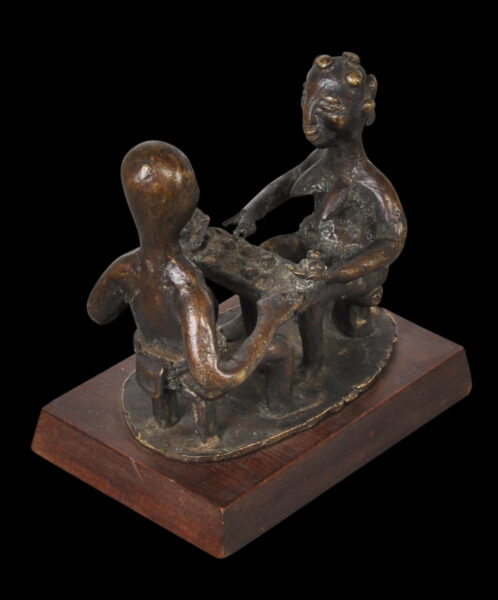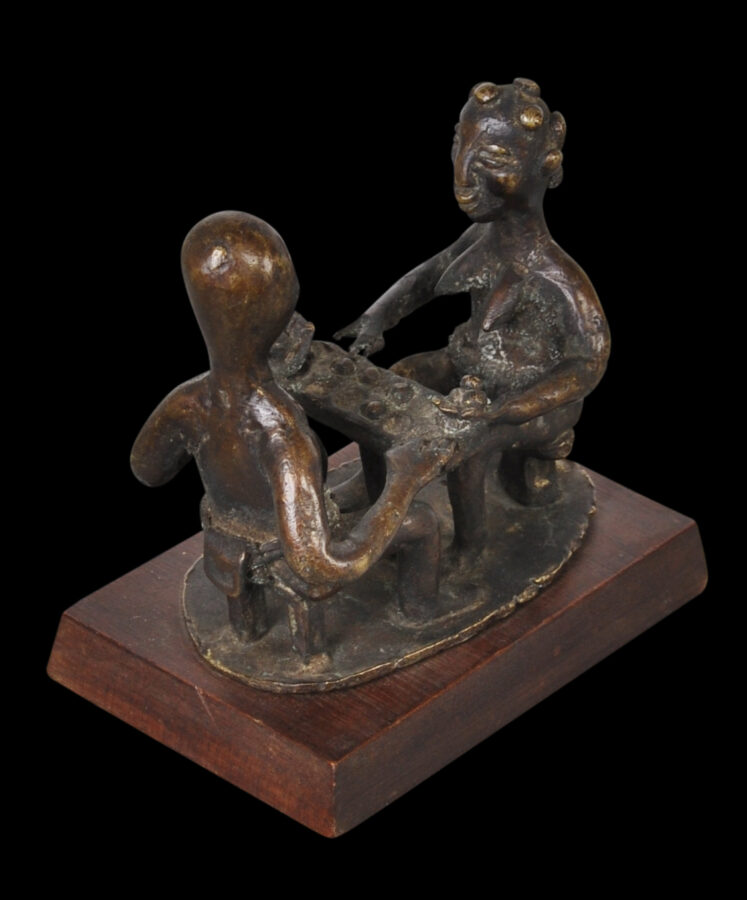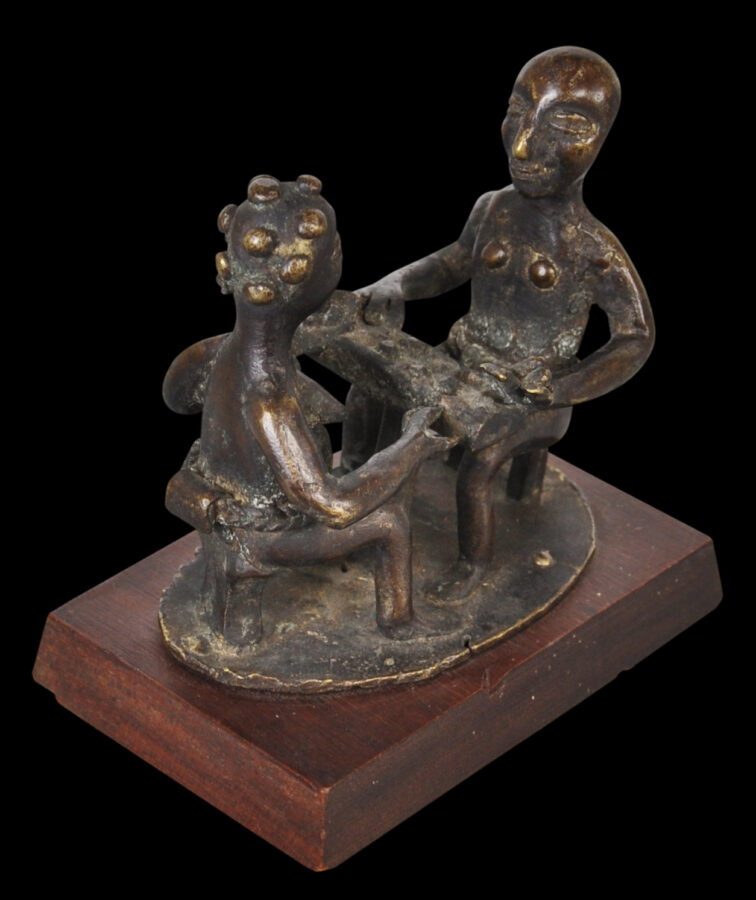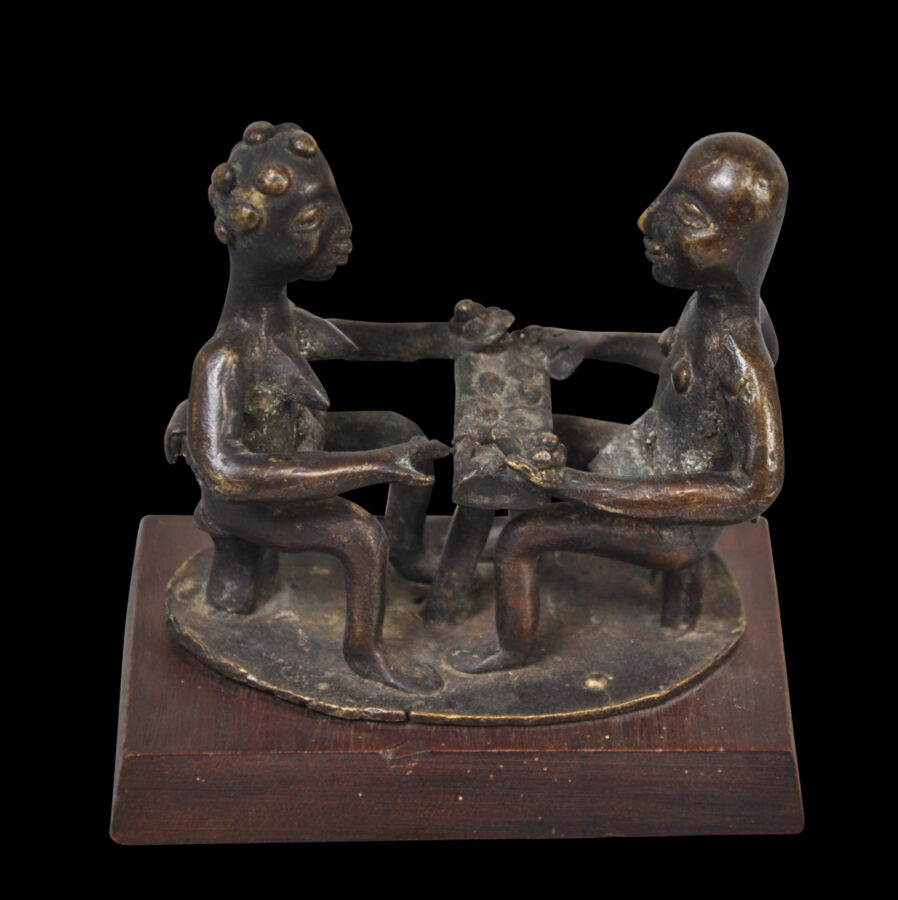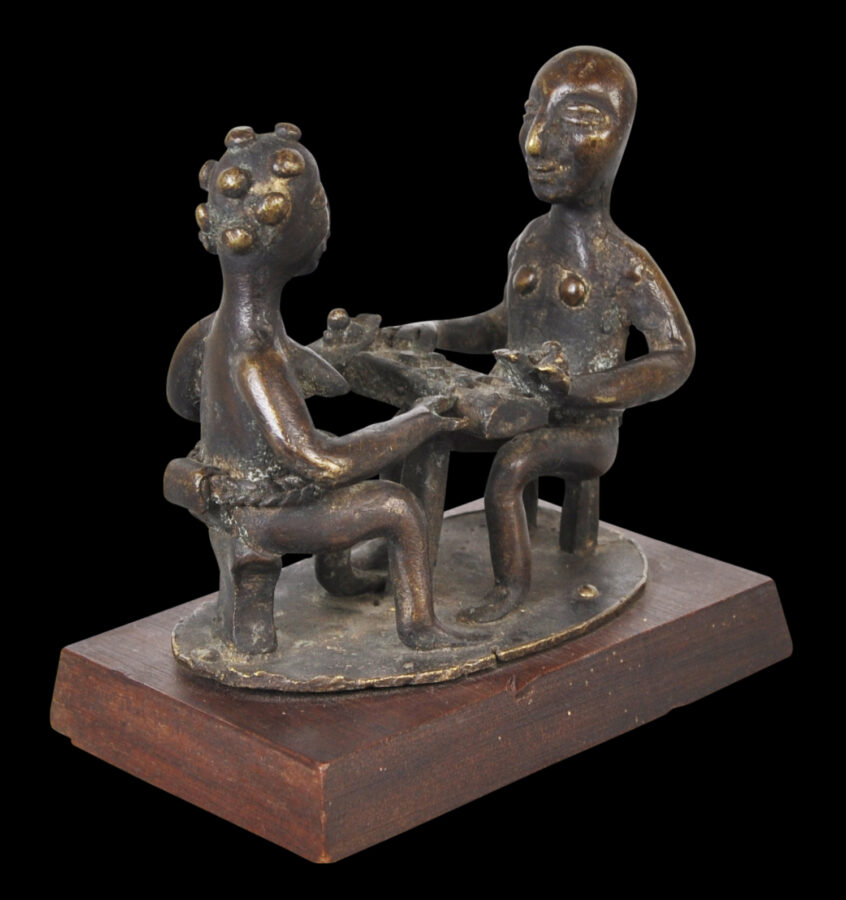This fine cast brass figurative group shows a man and a woman playing the Ashanti game known as oware, and would have been used as a personal gold weight. (Oware is a pit and pebble game of strategy believed to be of Ashanti origin.) The female figure has prominent, pointed breasts and multiple small hair knots. Both figures wear waist bands with what a probably purse-like pouches at the back and have coffee-bead eyes.
Personal weights such as this example were used in Ghana and elsewhere in West Africa. Principally, small weights were used to weigh gold dust which became the currency used to settle everyday transactions. Each party to any transaction would typically use their own weights – largely because one could trust one’s own weights in the absence of any government certified weighing system. The negotiating process not only would include the cost in gold dust of the items being transacted over but a comparison of weights, debate over the scales used, and the purity of the gold dust (gold often was adulterated with brass filings). Even transactions as rudimentary as buying vegetables in a street market necessitated this process.
Gold weights were cast in brass or bronze. They were used by the Akan who occupy a large part of West Africa including parts of Ghana and the Ivory Coast and include many sub-ethnic groups such as the Baule and the Asante (Ashanti). Gold became an important commodity which gave rise to Ghana’s old colonial name of the Gold Coast. The region was known as the Gulf of Guinea, and in England, a gold coin worth twenty-one shillings became known as a guinea (Philiips, 2010).
The example here has been attached to a wooden stand which itself seems to have some age. The brass has smoothed contours from handling and a varying dark patina.
References
Cole, H. M. & D. H. Ross, The Arts of Ghana, Regents of the University of California, 1977.
Phillips, T., African Goldweights: Miniature Sculptures from Ghana 1400-1900, Edition Hansjorg Mayer, 2010.
Robbins, W.M. & N.I. Nooter, African Art in American Collections, Smithsonian Institution Press, 1989.


